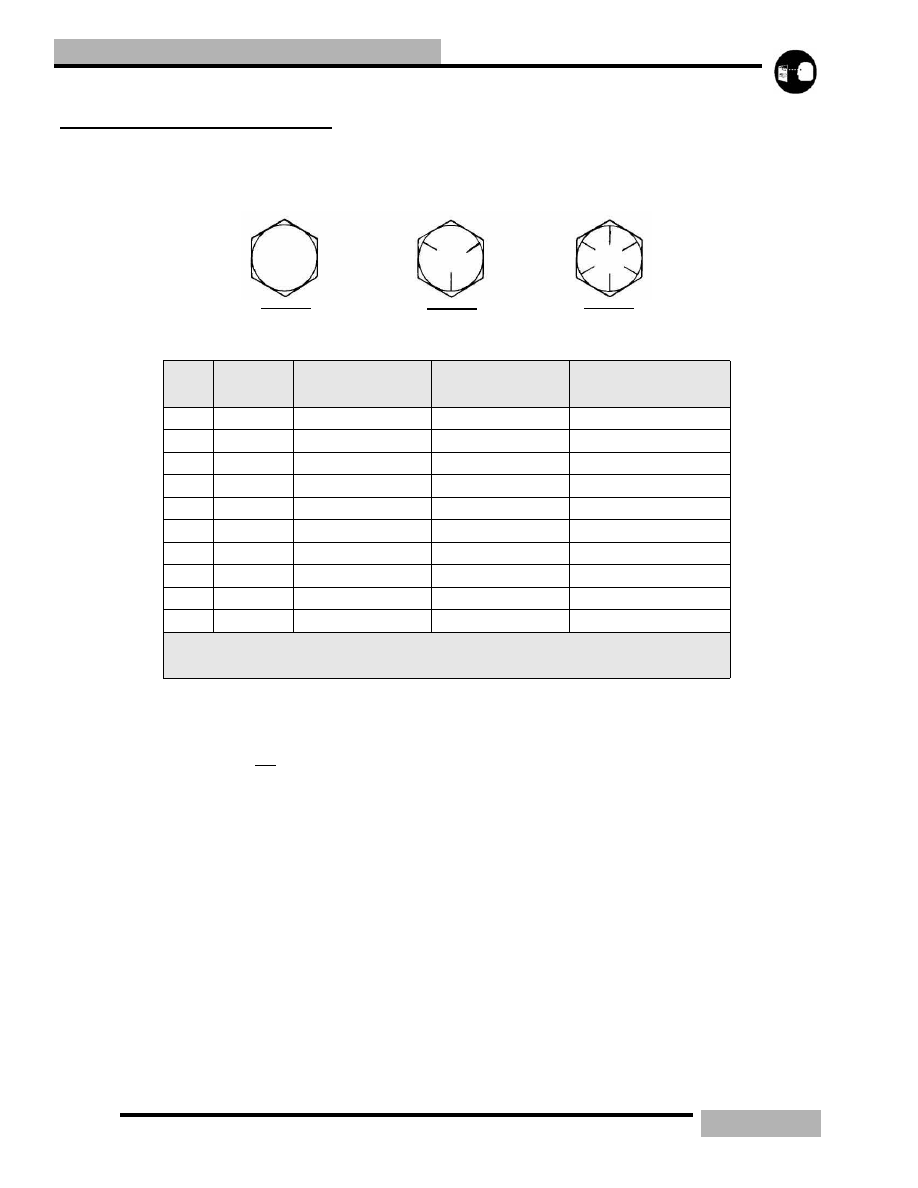Snowmobile Polaris (2006 year). Instruction - part 14

2.6
GENERAL
GENERAL REFERENCE
STANDARD BOLT SPECIFICATIONS
The following torque specifications are to be used as a general
guideline when torque value is not specified. There are
exceptions in the steering, suspension, and engine areas.
Always consult the torque chart and the specific manual
section for torque values of fasteners.
Table 2-5: Standard Bolt Specifications
Bolt
Size
Threads/
In
Grade 2
ft-lb(Nm)
Grade 5
ft-lb(Nm)
Grade 8
ft-lb(Nm)
1/4
20
5 (7)
8 (11)
12 (16)
1/4
28
6 (8)
10 (14)
14 (19)
5/16
18
11 (15)
17 (23)
25 (35)
5/16
24
12 (16)
19 (26)
29 (40)
3/8
16
20 (27)
30 (40)
45 (62)
3/8
24
23 (32)
35 (48)
50 (69)
7/16
14
30 (40)
50 (69)
70 (97)
7/16
20
35 (48)
55 (76)
80 (110)
1/2
13
50 (69)
75 (104)
110 (152)
1/2
20
55 (76)
90 (124)
120 (166)
ft-lb X 1.356 = Nm
Nm X.7376 = ft-lb
Grade 2
Grade 5
Grade 8